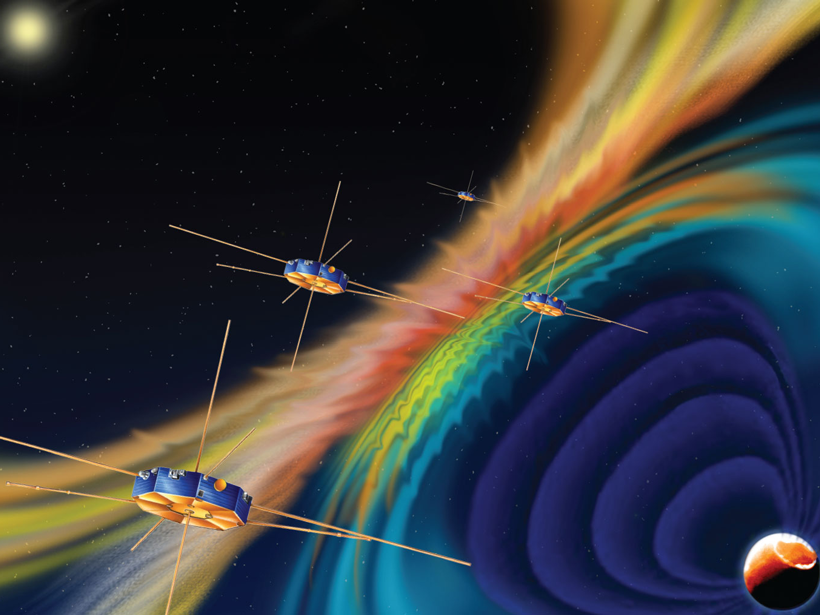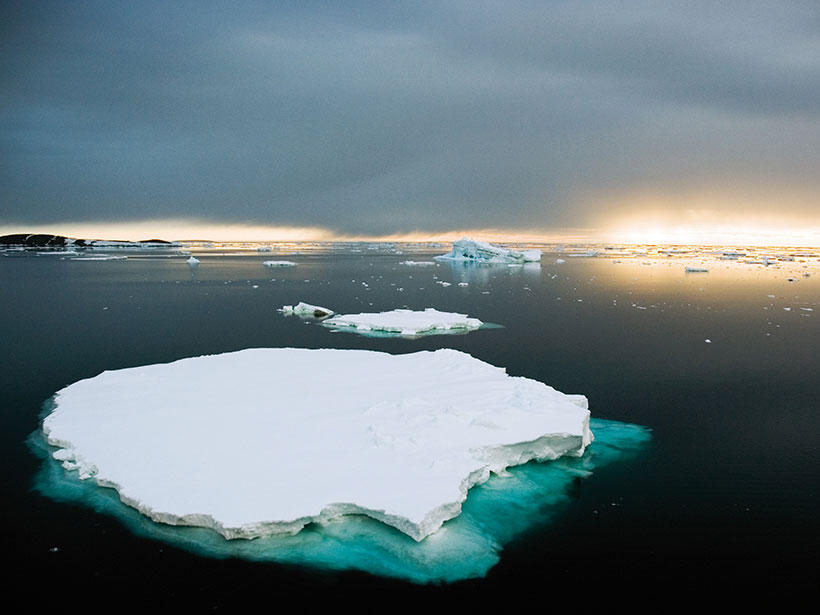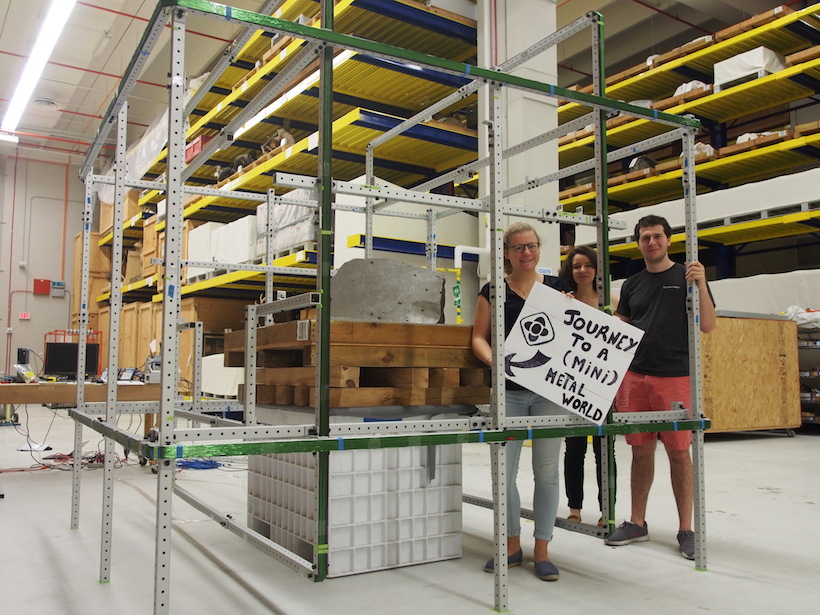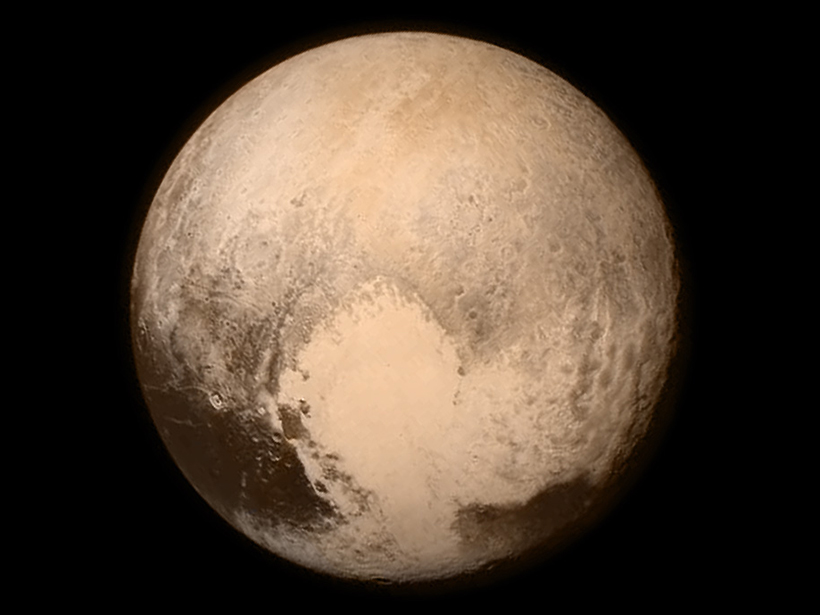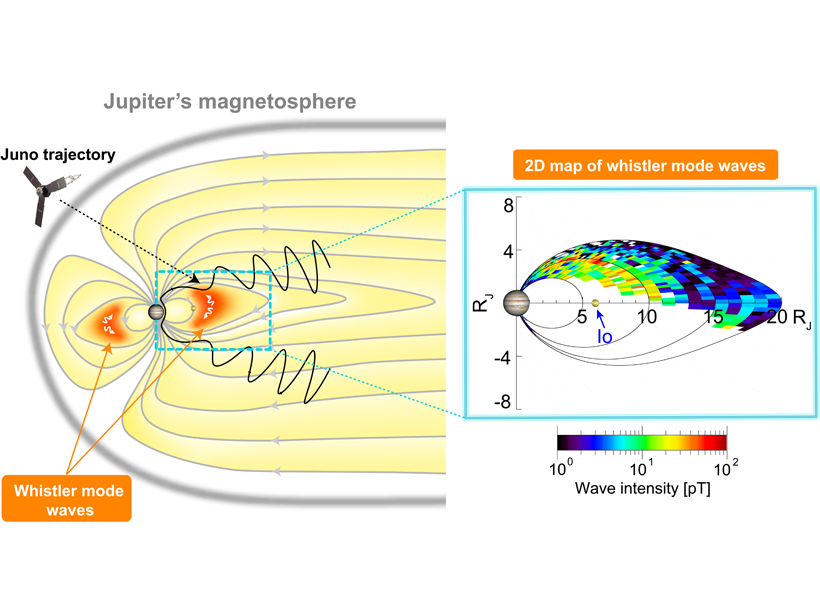Thanks to COVID-19, mission control for the Perseverance Mars rover will look emptier than previous missions, and fewer scientists and engineers will follow the rover’s schedule.
NASA
Spacecraft Reveal New Details of Magnetic Reconnection
Energetic electrons are accelerated directly by magnetic reconnections and can act as tracers of large-scale magnetic field conditions.
Radio on Jupiter, Brought to You by Ganymede
Another first from NASA’s Juno spacecraft: the detection of Jupiter radio emissions influenced by the moon Ganymede, over a range of about 250 kilometers in the polar region of Jupiter.
Gravity Data Reveal Unexpected Antarctic Ice Variations
A new analysis of long-term satellite records shows the East Antarctic Ice Sheet is unexpectedly dependent on fluctuations in weather. This study may improve models of how much sea levels will rise.
Measuring Massive Magnetic Meteorites
A new tool to measure the magnetic signatures of big meteorites could not only aid NASA’s mission to Psyche; it could also help solve mysteries about how magnetic fields formed in our early solar system.
Final Frontier? The Evolution of Planetary Science Missions
Planetary scientist Fran Bagenal explains how each NASA mission builds on previous discoveries and encourages scientists to take on difficult challenges to learn more about our home in the universe.
A Whistle Here, There, and Everywhere on the Giant Planet
NASA’s Juno spacecraft is “hearing whistles” all over the place on Jupiter, a type of natural plasma waves called whistlers that are sometimes associated with atmospheric lightning.
New Space Telescope Named for Nancy Roman, Astronomy Pioneer
Nancy Grace Roman’s namesake telescope will search for distant worlds and the earliest galaxies.
Five Spitzer Discoveries About Solar Systems Near and Far
The powerful infrared space telescope is powering down after 16 years. It has revolutionized our understanding of solar systems, including hidden surprises in our own.
Curiosity Rover Reveals Oxygen Mystery in Martian Atmosphere
An air-sampling study has captured long-term trends in the concentrations of five key atmospheric gases for the first time.


